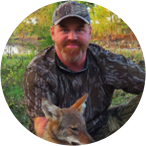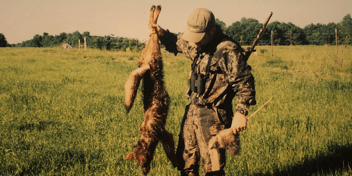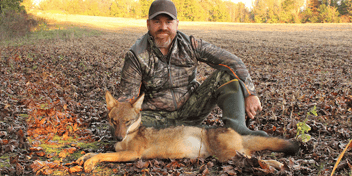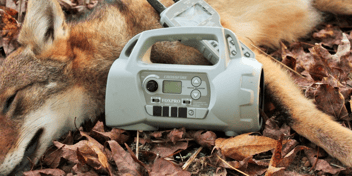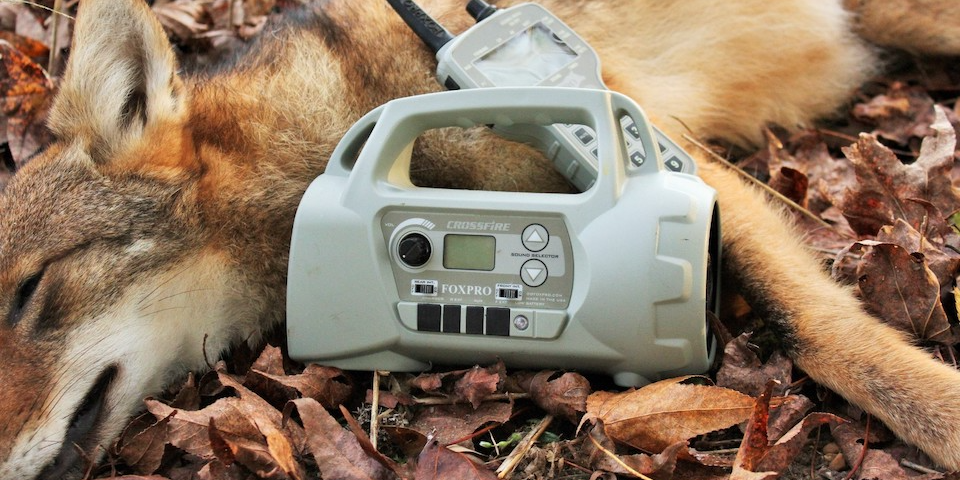
It was the last hunt of the afternoon on our spring coyote hunt in Nebraska. The wind had been ripping all afternoon making conditions extremely tough. I knew we’d have to be persistent and get in tight if we wanted coyotes to hear the sounds of our calls.
And on the last set of the evening, it finally happened. We dropped off into creek drainage, which gave us a break from the wind, and set up the decoy and caller. And just a couple of minutes into the calling sequence, two coyotes bailed off the ridge in front of us and disappeared into the creek bottom.
When they popped back out they were ready to kill. The lead dog got a double-tap from our anxious shooters and was dumped where he stood. The second dog popped up to see what all the excitement was about and was given the same treatment. It was a frustrating evening of calling coyotes, but one that succeeded.
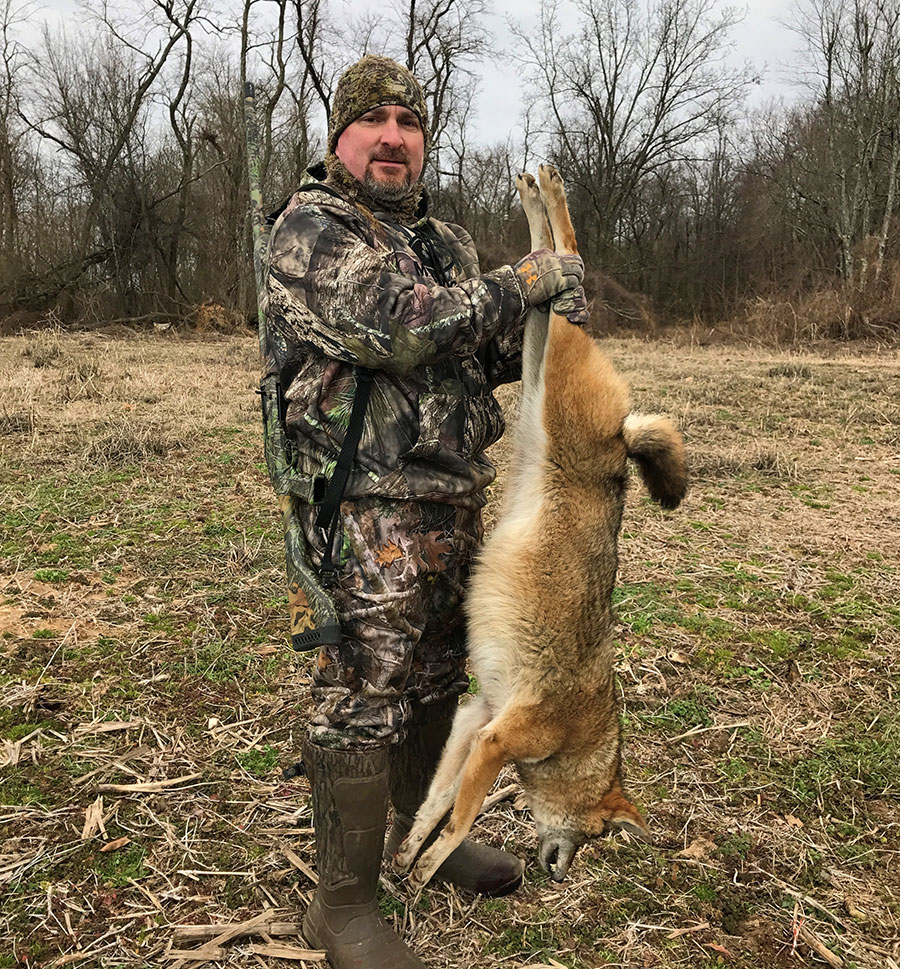
“Brodie's hunting partner, Scott Braham, has a Mossberg 930 Turkey shotgun over the shoulder and a dead coyote in the hands. The numbers game finally paid off.”
If there's one comment I hear more than any other when it comes to coyote hunting, it's, "I've tried coyote hunting before, but I never did any good."
When I dig a little deeper in my conversation with the rookie predator hunter, I typically discover that they most often sit at one spot and wail and wail on a predator call for an hour or so. When that fails they get up and head home, swearing off coyote hunting until they try it again a few weeks later. And I feel their pain. I've been there.
I remember calling up one of my coyote hunting mentors on the phone years ago and asking, "What am I doing wrong?"
The answer? Coyote hunting is a numbers game. Make enough sets, and you'll kill coyotes.
One Set Is Rarely Enough
Sure, that first set of the morning is the one we are often the most optimistic about. That's why we went there first. But more times than not, we are left scratching our heads as to why nothing responded to the call. The spot was perfect, right? It's at this point that many hunters pack up their gear and head to the house.
Big mistake
Coyote hunting is a numbers game like no other hunt. And every no-show stand simply means that you're one stand closer to an encounter. But you have to be persistent. You have to keep making stands even when you'd rather be back at the house eating breakfast. Making just one stand won’t typically cut it. Make your sets short and sweet. Call off and on for 15 minutes or so, and then move on to the next stand.
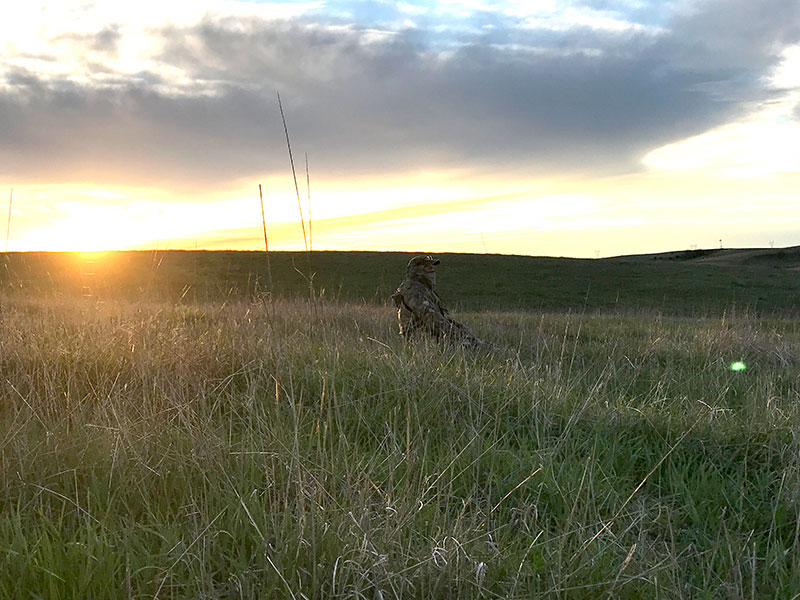
“The first and last calling set of the day always seem to be the best, but you’ll have to make plenty of sets in between if you want to find success.”
Reaching Their Ears
I know it sounds like a no-brainer, but your call must land on a coyote's ears to achieve success. You can call until you’re blue in the face, but if those sounds aren't reaching a coyote's ears, it ain't gonna happen. And that's okay. Just don't quit. Sometimes it's only a matter of moving a few hundred yards closer or moving from one end of a large field to the other. Some days you'll have to be more aggressive than others, depending on the wind and weather.
I was hunting with a friend this past spring on a windy day in Tennessee. We made a set on a killer-looking field that I would have nearly bet money on. When nothing showed up, we decided to move around the field just 200-yards. Two minutes into the calling set a big female came charging to the decoy. It was her last mistake. The little change in distance was all it took to get on the ears of that coyote. It took a willingness to get beyond our frustration and be willing to make one more stand.
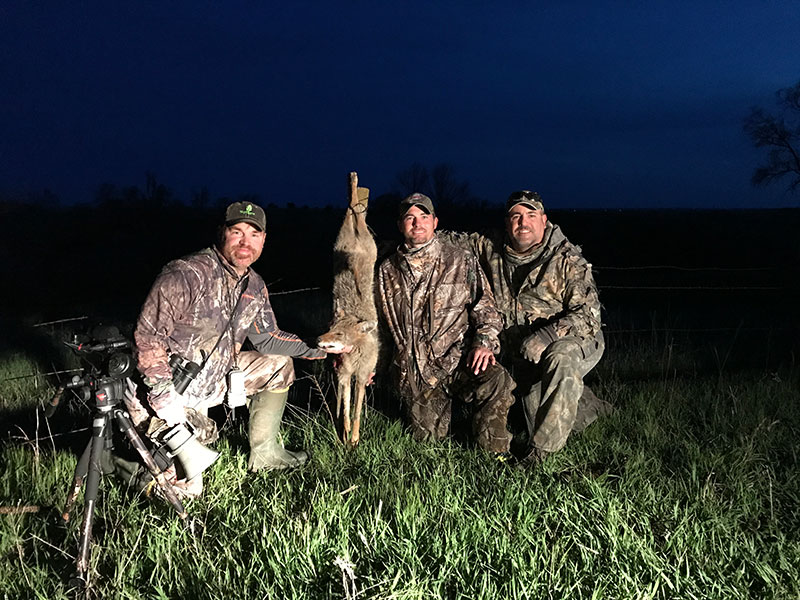
“This coyote came in on the last set of the day after we made 4 other calling stands.” Brodie is using the Mossberg 930 Turkey with a pistol grip.
How Many Sets Does It Take?
Another common question I hear often is, "How many calling stands does it typically take?"
That honestly all depends on where in the world you're hunting. In my area of West Tennessee, we've been cursed with several coyote-calling tournaments on an annual basis. While the tournaments make for a good time for participants, it puts a tremendous amount of hunting pressure on our local coyotes. They get a good education every February when the tournament comes to town again. Years ago, we'd call up a coyote every 6 or 7 stands. Nowadays, with these tournaments in town, and an abundance of pressure in our area, calling a coyote up every 10-12 stands is not uncommon. It makes things tough.
But other areas of the country are different. I've hunted in Texas and experienced coyotes charging the call every 1-3 calling sets. Our numbers in Nebraska this past spring resulted in call-ins every 3-5 sets. And that's good stuff. The bottom line is, get away from the pressure. Find coyotes that haven't been called to, and your numbers will be much more effective.
If you want to be a predator hunter, you must be committed. If it was easy, everybody would be doing it. The most successful hunters I know are the ones that will keep going no matter what.
Excuses are easy to come by: It's too hot, too cold, too windy, too early, too late, too cloudy, too sunny, I'm too hungry, and the list goes on. Do you want to kill coyotes? No excuses! It's a numbers game. Put in the time. Make the sets. You will kill more coyotes.
About the Author
